Summary
- Two sigma events are a rarity and have coincided with periods that have produced poor long term returns.
- Utilizing two standardized values, CAPE and trailing 5-year returns, these metrics have captured all significant equity market bubbles. We are currently in two sigma territory.
- Markets can endure beyond the two sigma signals and, with unusual Fed policy, it can continue to do so.
- However, it is important to be aware that 10-year risk adjusted returns have been negative beyond these signals and long term investors should plan accordingly.
- Also, aggregate profits have suffered a significant decline in Q1, and the historical implications are poor moving forward.
(click to enlarge)
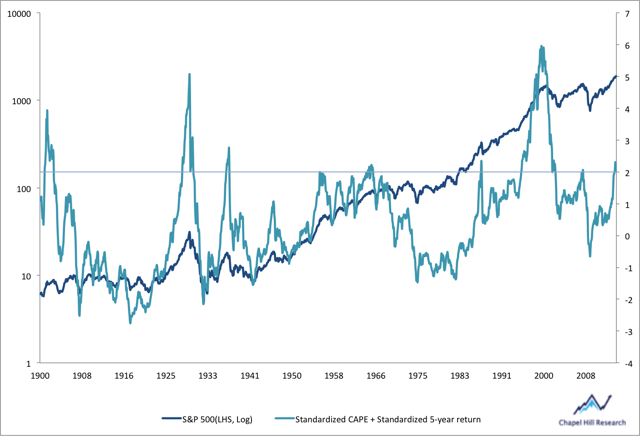
These events occurred in '29, '37, '65, '87, '95-'00, '07, and now '14. As you would presume, it never ends well. The average 10-year return in excess of Treasuries of similar duration after these two-sigma events is -2.02% a year. This is including '87 when the market plummeted abruptly and then proceeded to march higher. Surely, as validated by the '65 and '00 bubble, the market can endure and move to the upside in the short term. However, for us long term investors, this is dispiriting information.
Also, aggregate corporate profitability plummeted -6.8% year-over-year in the first quarter of this year.
(click to enlarge)
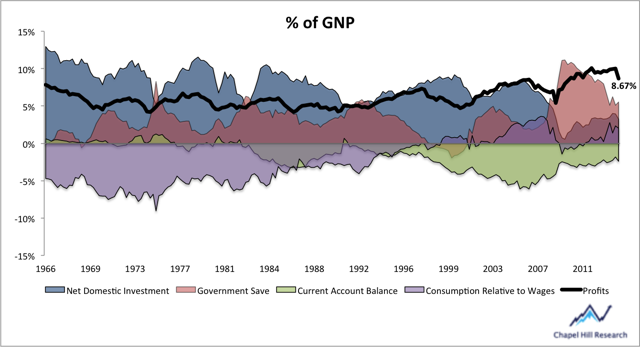
Profits tumbled from 10% of GNP to 8.67%. This was largely the result of a -18% year-over-year descent in net domestic investment, driven by a drop in inventories and government investment. Also, consumption relative to wages was down -13% year-over-year from a -9% plunge in dividends. (For the subject of profits in greater detail visit here)
(click to enlarge)
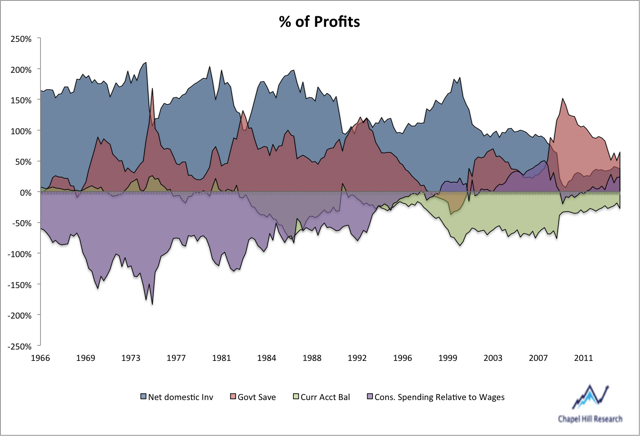
Below are the historical instances when aggregate profits declined by more than 5% from the previous year(adjusted for look ahead bias).
(click to enlarge)
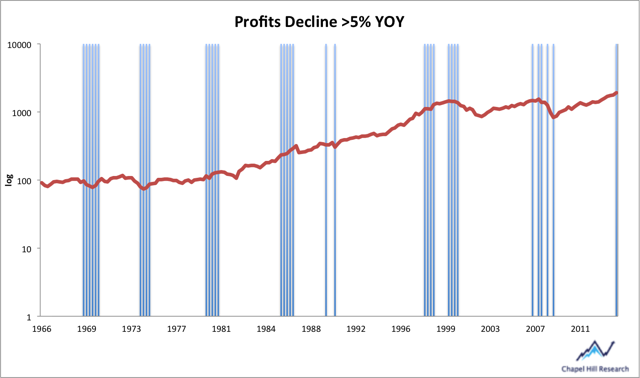
It has corresponded with some good periods to buy and, more times that not, poor periods to buy. The difference being that the market either persisted to the upside, or it had already made a significant move to the downside, making valuation levels more appealing. Taken at face value, I would conclude this is not a suitable time to buy.
Discernibly, this is discouraging for the corporate private sector return on equity, which was already historically elevated.
(click to enlarge)
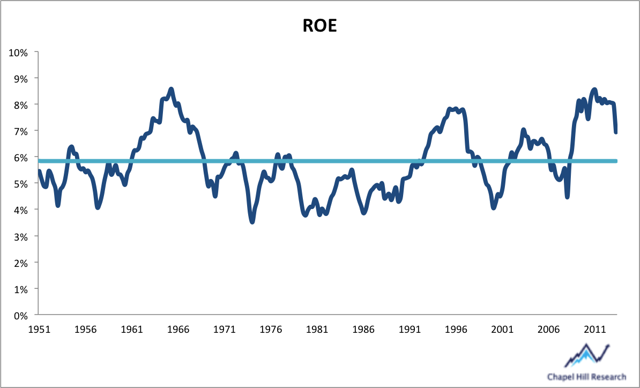
Use this information in alignment with your investment process and perspective. If you believe the Federal Reserve will continue pushing equities higher in the near term, please position yourself accordingly. However, from the perspective of a long-term investor, now is a good time to reduce your exposure to domestic equities because if history is any indication, long-term performance is likely to be anemic. (Prospective long-term returns in greater detail visit here and here).
No comments:
Post a Comment